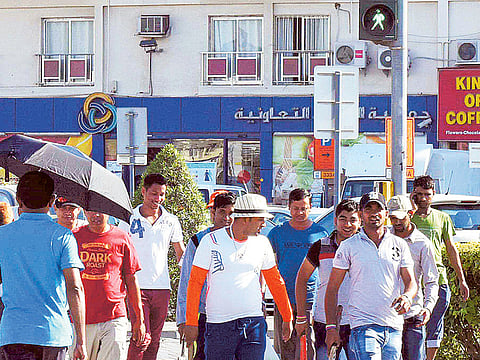Predictive systems the way forward for Dubai
Expert suggests a shift from reactive systems to smart systems that pre-assess traffic density before it gathers at a signal

Dubai: What more can be done to enhance the traffic light system in Dubai?
Gulf News spoke with Tawab Kazemi, technical director of Transport Research Laboratory, an independent UK-based research firm with a presence in the UAE.
“At the moment, Dubai is doing a good job and is ahead of all cities in the region in the way it is managing the traffic. However, there is always scope for improvement,” said Kazemi, who has been offering his expertise to various civic authorities in the UAE for the last eight years, including the Roads and Transport Authority (RTA) of Dubai.
Traffic in Dubai grows almost every day, with thousands of vehicles from the neighbouring emirates and GCC countries entering the emirate daily, apart from the 1.5 million vehicles registered in Dubai.
The RTA, Kazemi said, is doing a great job in responding to the growing traffic volumes by modifying and expanding Dubai’s road network.
In tandem to adding capacity to the existing road network, Kazemi suggests solutions to optimise the use of the available network.
“SCOOT, the smart traffic signalling system currently in use by the RTA optimises traffic flow every four seconds. Currently it works with sensors in the road surface, but with vehicles increasingly able to communicate information such as location, speed and destination, the system is set to evolve to make use of this data to further improve traffic flows,” said Kazemi.
“However, although SCOOT is extremely effective, like all systems it has its limitations,” Kazemi said.“SCOOT is a fast and efficient live optimisation process of the traffic signal timings, but one limitation that can reduce its efficiency is the large distances between signals where traffic is expected to be dispersed and not travel in platoons. In this case, traffic systems like MOVA are more appropriate. Another scenario that could affect the flow of traffic is where particular types of vehicles are given priority at signals, for example, bus priority at bus lanes and so on. The demand-dependant scenario will disturb the optimisation process and can take a little time to re-optimise,” he explained.
“In most of the cases [of traffic routes], there is very little room for physical expansion of the junctions and therefore, smart solutions need to be adopted to increase the capacity of the junctions. Considering the ever-changing nature of traffic and road network in Dubai, regular updates to signal timings are imperative. Adopting smart technologies to assist in this process is key to achieving a more efficient world-class transport system,” Kazemi explained.
A next generation system has been tested and is currently on trial in some Western countries, he informed.
It predicts where traffic is coming from and where it is headed for by using available data in vehicles.
Predictive modelling has also been used extensively in London, England by Transport for London in conjunction with its SCOOT system, which manages some 3600 traffic light junctions across the city. This enables London to better understand its traffic network and accommodate and respond to both planned and unplanned events which may affect the roads and traffic.
Predictive systems can forecast the demand for a particular time period based on historic data, such as locations and density of traffic, to optimise traffic flow accordingly. It also constantly updates its data to make regular changes to the sequence [of how often the lights should change].”
Another important suggestion made by Kazemi concerns pedestrian signals and their time optimisation. “A number of pedestrian signals depend on push buttons,” said Kazemi. “In this system, pedestrians arrive at a crossing and then wait for the signal to turn green.”
“More recent developments in the SCOOT system enable pedestrian priority as part of the road network and traffic flow. In areas where pedestrian movements are important pedestrian crossing will be prioritised, whilst in other areas public transport or vehicular traffic will be more important. Such systems are already in use in cities such as London.”
“With new predictive technologies, sensors detect pedestrian movements and optimise pedestrian signals,” said Kazemi. “In this system, a pre-assessment of the on-foot traffic moving towards the crossing creates a ‘green time’ by the time the pedestrian arrives at the crossing, thus saving time for the pedestrian and optimising the flow of pedestrian movement.”
Sign up for the Daily Briefing
Get the latest news and updates straight to your inbox


